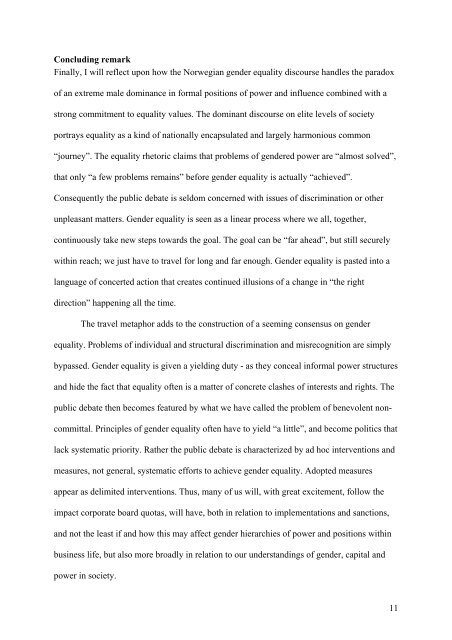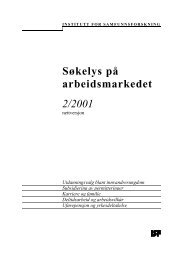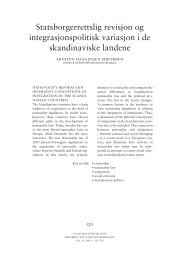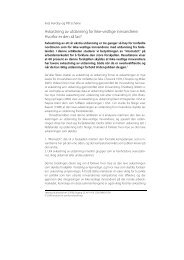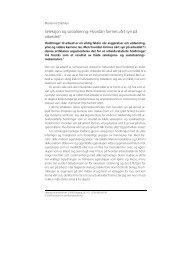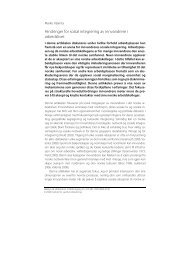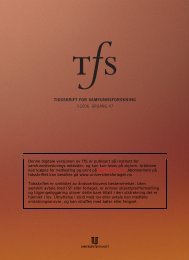Women in decision-making: The Norwegian Paradox
Women in decision-making: The Norwegian Paradox
Women in decision-making: The Norwegian Paradox
Create successful ePaper yourself
Turn your PDF publications into a flip-book with our unique Google optimized e-Paper software.
Conclud<strong>in</strong>g remark<br />
F<strong>in</strong>ally, I will reflect upon how the <strong>Norwegian</strong> gender equality discourse handles the paradox<br />
of an extreme male dom<strong>in</strong>ance <strong>in</strong> formal positions of power and <strong>in</strong>fluence comb<strong>in</strong>ed with a<br />
strong commitment to equality values. <strong>The</strong> dom<strong>in</strong>ant discourse on elite levels of society<br />
portrays equality as a k<strong>in</strong>d of nationally encapsulated and largely harmonious common<br />
“journey”. <strong>The</strong> equality rhetoric claims that problems of gendered power are “almost solved”,<br />
that only “a few problems rema<strong>in</strong>s” before gender equality is actually “achieved”.<br />
Consequently the public debate is seldom concerned with issues of discrim<strong>in</strong>ation or other<br />
unpleasant matters. Gender equality is seen as a l<strong>in</strong>ear process where we all, together,<br />
cont<strong>in</strong>uously take new steps towards the goal. <strong>The</strong> goal can be “far ahead”, but still securely<br />
with<strong>in</strong> reach; we just have to travel for long and far enough. Gender equality is pasted <strong>in</strong>to a<br />
language of concerted action that creates cont<strong>in</strong>ued illusions of a change <strong>in</strong> “the right<br />
direction” happen<strong>in</strong>g all the time.<br />
<strong>The</strong> travel metaphor adds to the construction of a seem<strong>in</strong>g consensus on gender<br />
equality. Problems of <strong>in</strong>dividual and structural discrim<strong>in</strong>ation and misrecognition are simply<br />
bypassed. Gender equality is given a yield<strong>in</strong>g duty - as they conceal <strong>in</strong>formal power structures<br />
and hide the fact that equality often is a matter of concrete clashes of <strong>in</strong>terests and rights. <strong>The</strong><br />
public debate then becomes featured by what we have called the problem of benevolent noncommittal.<br />
Pr<strong>in</strong>ciples of gender equality often have to yield “a little”, and become politics that<br />
lack systematic priority. Rather the public debate is characterized by ad hoc <strong>in</strong>terventions and<br />
measures, not general, systematic efforts to achieve gender equality. Adopted measures<br />
appear as delimited <strong>in</strong>terventions. Thus, many of us will, with great excitement, follow the<br />
impact corporate board quotas, will have, both <strong>in</strong> relation to implementations and sanctions,<br />
and not the least if and how this may affect gender hierarchies of power and positions with<strong>in</strong><br />
bus<strong>in</strong>ess life, but also more broadly <strong>in</strong> relation to our understand<strong>in</strong>gs of gender, capital and<br />
power <strong>in</strong> society.<br />
11


